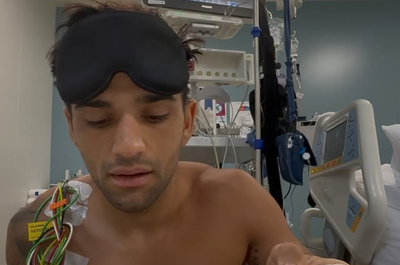Yamaha boys nuts about Brazil.
The Jacarepagua circuit has been hosting rounds of the motorcycling world championships on and off since the mid-nineties, having taken over on a permanent basis from rivals across the country.
The track staged its inaugural GP in September 1995, taking over from the original Brazilian GP venues of Goiania - which hosted the 1987, '88 and '89 Brazilian GPs - and Interlagos, which staged a one-off race in '92. The 1996, '97, '99 and 2000 races at Jacarepagua have all been run under the mantle of the Rio Grand Prix.
The Jacarepagua circuit has been hosting rounds of the motorcycling world championships on and off since the mid-nineties, having taken over on a permanent basis from rivals across the country.
The track staged its inaugural GP in September 1995, taking over from the original Brazilian GP venues of Goiania - which hosted the 1987, '88 and '89 Brazilian GPs - and Interlagos, which staged a one-off race in '92. The 1996, '97, '99 and 2000 races at Jacarepagua have all been run under the mantle of the Rio Grand Prix.
The circuit itself is fast and open, encouraging close racing; in fact only one of the five 500 GPs staged at the track has produced a winning margin in excess of one second. Mostly fast, bumpy and slippery, the circuit may not allow gravity-defying cornering like some grippier tracks but its 1.1km back straight promotes slipstreaming, which helps keep riders bunched together all race long. Slipstreaming is a crucial game of cat and mouse played out on longer straights, as riders can gain advantage by chasing another
machine, using the vacuum created by the lead bike to improve their speed and slingshot ahead.
Max Biaggi knows as well as anyone that Jacarepagua is a tricky circuit which requires inch-perfect riding and a user-friendly machine set-up.
"The Rio track is quite difficult because the surface isn't in the best condition," says the Marlboro Yamaha Team rider, "That's why you need perfect machine settings and balance because, if you don't feel totally at ease on the bike, you can't concentrate on riding, and with so many bumps and not so much grip, it's easy to make a mistake at Rio."
Of course, sweet handling isn't everything at Jacarepagua because the circuit features one of the longest straights in GP racing, where bikes exceed 300kmh. Horsepower is therefore every bit as important as grippy tyres and good chassis set-up.
"Top speed is important, as is getting a good drive on to the back straight so you can slipstream other bikes," says team manager Geoff Crust, "But the riders definitely have to work hard through the other parts of the track, because with all the bumps and the lack of grip, they're always on the edge."
Biaggi's team-mate Carlos Checa came within a fraction of a second of scoring pole position at last year's Rio Grand Prix, so he knows what's required for a very fast lap.
"Most of the corners are the kind that you flick into and then get straight on the gas," says the Spanish star, "The corners aren't too long and rounded like they are at some tracks, so you can really attack them, which is a lot of fun. But you also need a good engine, with plenty of top-end power for the long straight."
Checa's crew chief Mike Webb will have a double-edged focus for this weekend, aiming to give his man plenty of horsepower and plenty of grip.
"Rio has one the fastest straights in racing," he says, "It's all engine power down the back straight. But the track is quite a mixture, and the rest of it is quite flowing. All the turns flow into each other so, if you get one wrong, you get two or three wrong. But it's the tyres that are the single most determining factor. Tyres are everything in 500s and that's even more true at Rio, because the bike is on its side for a lot of the time."










